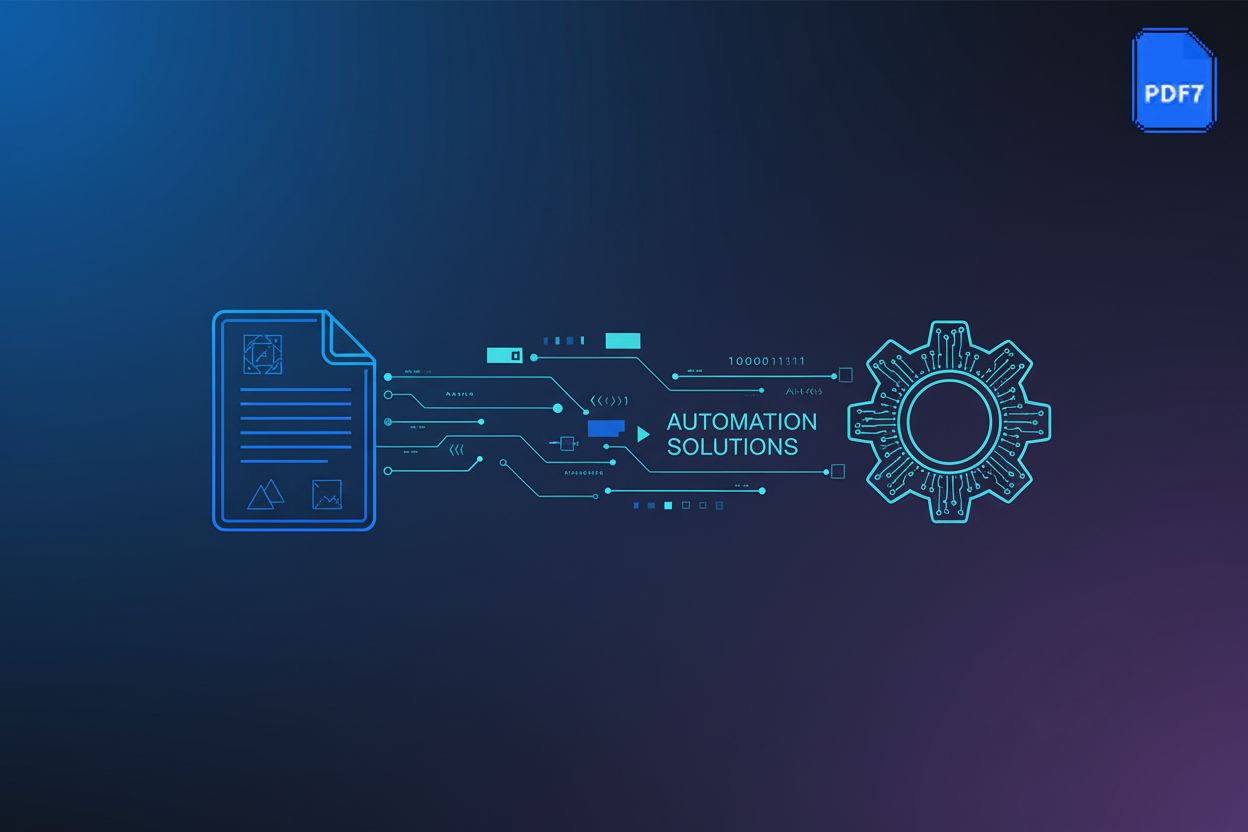An Overview of Distributed File Systems
TL;DR
Understanding Distributed File Systems
Okay, let's dive into Distributed File Systems. Ever tried sharing a huge video file and it just crawls? That's where DFS comes to the rescue.
So, what exactly is a Distributed File System (DFS)? Basically, it's a file system spread across multiple servers or machines that appears as one unified system to the user. Think of it like this: you're accessing files, but they could be stored on different computers in different locations. The magic is, you don't even realize it.
Definition and core principles of dfs: The core idea behind a dfs is to provide seamless access to files, regardless of where they're physically stored. It's all about location transparency, meaning users don't need to know where a file lives to access it. Performance, reliability, and scalability are key principles that drive the design and implementation of DFS.
How dfs differs from traditional file systems: Traditional file systems live on a single machine. DFS, on the other hand, is distributed, offering benefits like increased storage capacity and fault tolerance. If one server goes down, your data is still accessible from another.
Key characteristics: scalability, availability, and performance: Scalability means the system can grow as your data needs increase. Availability ensures your files are accessible whenever you need them. And performance? Well, a good dfs minimizes latency and maximizes throughput.
Why bother with a dfs anyway? Because it solves some pretty big problems. Imagine a massive document archive being accessed by hundreds of users simultaneously. A traditional system would choke, but a dfs can handle it.
Benefits of using dfs: The main advantages are pretty clear: faster access, handles more data, and keeps working even if parts fail. For instance, in healthcare, accessing patient records quickly is crucial. A dfs ensures doctors can get the info they need, when they need it, without worrying about server crashes slowing things down.
Practical applications of DFS: DFS is changing the game for companies dealing with massive amounts of data across various sectors. This includes document processing and management, as well as supporting collaborative workflows.
How dfs supports collaborative workflows: DFS also makes it easier for teams to work together on documents. Everyone can access and edit files stored in a centralized location, streamlining collaboration and reducing version control headaches. You know, the kinda headaches where you are not sure if you are actually working on the latest version of the file.
There are a few ways dfs can be structured. The most common one is client-server, but there are others too.
Client-server architecture: This is the most common setup. Clients request files from servers, which manage the data. It's simple, but can have bottlenecks if one server gets overloaded.
Peer-to-peer architecture: In this model, each node can act as both a client and a server. It's more decentralized and resilient, but can be harder to manage. This decentralization means there's no single point of failure, but it also introduces complexities in maintaining data consistency and coordinating updates across all nodes. Managing user permissions and ensuring all nodes are running the latest software can also be a significant challenge.
Object-based storage: Instead of files, data is stored as objects with metadata. This allows for more flexibility and scalability.
Examples of popular dfs architectures (e.g., hadoop hdfs): Hadoop hdfs is a well-known example, designed for storing and processing large datasets. It's used extensively in big data applications.
So, that's a quick look at what distributed file systems are all about. Next up, we'll be diving into some specific practical applications.
DFS in Document Processing and Management
Okay, so you're drowning in documents, right? Imagine that but, like, a lot worse. That's why DFS and document processing are a match made in heaven – or at least, in a data center.
How DFS enhances PDF conversion workflows: think about converting hundreds of PDFs to different formats. Doing it on a single machine? Gonna take forever. But with a dfs, you can distribute the workload across multiple servers, speeding things up massively. This distribution is often managed through task queues and worker nodes that pick up conversion jobs. It's like having a bunch of mini-converters working together, instead of one overworked dude.
Benefits for PDF compression and optimization: Large pdfs are a pain, especially when emailing or storing them. dfs allows you to use multiple servers to compress and optimize these files in parallel. This means faster processing and smaller file sizes. For instance, a marketing agency dealing with high-resolution brochures can quickly optimize them for web use.
Support for batch processing of PDF files: Batch processing is where dfs really shines. Imagine a law firm needing to redact sensitive info from thousands of documents. With dfs, they can automate this process, distributing the workload and completing the task much faster than manually going through each file. Time savings can be, uh, pretty significant.
Scalability for handling large volumes of file conversions: Ever try converting a massive archive of old documents? It's a nightmare. dfs lets you scale your conversion capacity as needed. More files? Just add more servers to the cluster. This is crucial for organizations digitizing large paper archives.
Improved reliability for critical document conversion tasks: What happens if your server crashes mid-conversion? With a traditional system, you're screwed. But dfs provides redundancy. If one server fails, another takes over, ensuring your conversion tasks complete without interruption. This is super important for time-sensitive tasks, like financial reporting.
Support for various file formats and conversion requirements: dfs can handle a wide range of file formats, from legacy formats to the latest standards. This flexibility is essential for organizations dealing with diverse document types, such as engineering firms working with CAD files and technical specifications.
Centralized storage and access for documents: No more hunting through shared drives and email attachments to find the right document. A dfs provides a single, centralized location for all your documents, making it easier to find and access what you need. While the storage is distributed, the system presents a unified namespace, making it appear as one big, organized filing cabinet.
Version control and audit trails: ever accidentally overwrite a file? With dfs, you can track changes and revert to previous versions if needed. Plus, audit trails provide a record of who accessed and modified each document, improving security and compliance. This is vital for industries with strict regulatory requirements, like pharmaceuticals.
Improved search and retrieval capabilities: Finding that one specific clause in a 500-page contract can be a real drag. DFS enables advanced search capabilities, allowing you to quickly locate the information you need, even within large documents. Full-text search is a lifesaver, trust me.
Native PDF editing capabilities with PDF7: PDF7 offers a suite of tools that seamlessly integrate with DFS, enabling users to merge, rotate, remove pages, organize, compress, and repair PDF documents directly within the distributed environment. Explore our range of features from file conversion to security options at https://pdf7.app/.
So, basically, dfs makes document processing and management way more efficient and reliable. It's like upgrading from a bicycle to a sports car... a really, really fast sports car.
Next up, we'll look into how dfs handles security and compliance – because, you know, keeping your data safe is kinda important.
Challenges and Considerations
Okay, so DFS isn't all sunshine and rainbows, right? Think about it: spreading your data all over the place introduces a whole new set of headaches.
Data Consistency and Coherency: Imagine multiple people editing the same document at the same time but on different servers. Yikes! Ensuring everyone sees the latest version isn't easy. Strategies like versioning and locking mechanisms are essential to prevent conflicts. A hospital, for instance, needs to ensure that patient records are consistent across all departments, or you could wind up with some serious medical errors.
Security Considerations: Spreading your data across multiple nodes means more entry points for potential threats. Access control is crucial. You need to make sure only authorized users can access sensitive files. Data encryption, both in transit and at rest, is also a must. Think about financial institutions processing transactions; a breach could be catastrophic, leading to fraud and loss of customer trust.
Performance Optimization: A DFS can be super fast, but only if it's set up right. Things like caching frequently accessed files closer to the user and load balancing to distribute requests evenly across servers are key for avoiding bottlenecks. A retail company, for example, needs to ensure their product catalogs load quickly for online shoppers, wherever they're located.
Data consistency is a biggie. If you're not careful, you can end up with different versions of the same file floating around, which leads to chaos. Techniques like two-phase commit can help. This is a distributed algorithm that ensures all nodes in a transaction either commit or abort the transaction, guaranteeing atomicity across the distributed system. However, it also adds complexity and can impact performance.
Security is not just about preventing external attacks, but also about controlling internal access. Implementing role-based access control (rbac) is a good start. Regularly auditing access logs can also help you spot any suspicious activity. It's kinda like having security cameras for your data.
Nobody wants to wait forever for a file to load. Caching can help a lot, but you need to make sure the cache is up-to-date. Load balancing ensures that no single server gets overloaded. Content Delivery Networks (CDNs) are also useful for distributing content closer to users.
So, yeah, DFS has its challenges, but the benefits are often worth it. As discussed in the context of document processing, DFS improves reliability for critical document conversion tasks. Next up, we'll talk about how dfs handles security and compliance – because, you know, keeping your data safe is kinda important.
Future Trends in Distributed File Systems
Okay, so what's next for DFS? It's not gonna stay still, that's for sure. Let's peek into the crystal ball, shall we?
Cloud-Based DFS Solutions: You know, everyone's moving to the cloud, and DFS is no different. Think about it: why manage your own servers when you can let Amazon (with aws s3) or Microsoft (with Azure Blob Storage) handle it? It's like, outsourcing your storage headaches. Plus, it integrates nicely with other cloud services, making document processing pipelines smoother.
AI and Machine Learning in DFS: Imagine ai predicting which files you'll need next and pre-loading them. That's the kinda stuff we're talking about. ai can optimize data placement, making sure frequently accessed files are closer to the user. Automated performance optimization? Yes, please!
Emerging Technologies: Storage tech is always evolving. nvme drives are getting faster, new protocols are popping up, and edge computing is changing the game. Edge computing brings processing closer to the data source, reducing latency. This is particularly important for real-time document processing in remote locations. Examples of emerging protocols could include advancements in object storage protocols or more efficient data transfer methods designed for distributed environments.
Think about a global retail chain. They could use ai to predict which product catalogs are most likely to be accessed in different regions and pre-load them onto edge servers. This ensures that customers get fast access to the info they need, no matter where they are.
PDF7 offers a suite of tools that seamlessly integrate with DFS, enabling users to merge, rotate, remove pages, organize, compress, and repair PDF documents directly within the distributed environment.
So, to wrap it up, the future of DFS is looking pretty exciting. Cloud, ai, and new storage technologies are all coming together to create systems that are faster, more efficient, and easier to manage. The ongoing evolution of DFS promises even greater capabilities for handling vast amounts of data.









